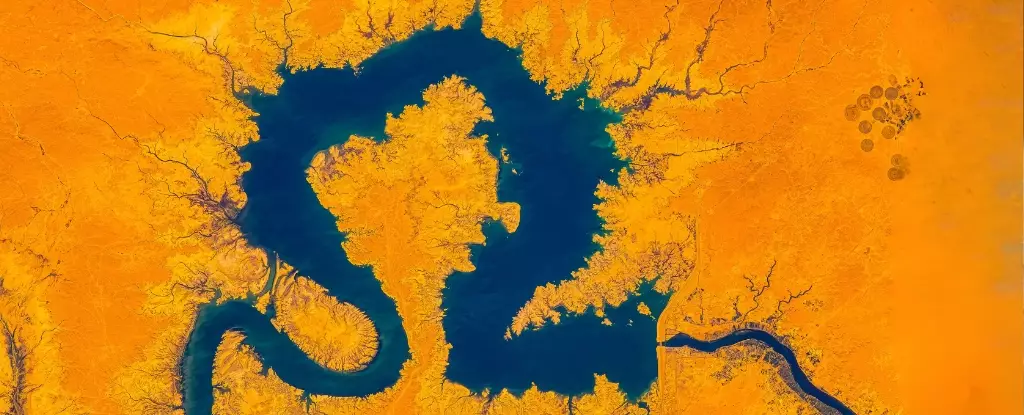Human civilization often sees itself as a passive observer in Earth’s intricate systems, but recent scientific insights challenge this notion. The construction of dams and reservoirs, widely regarded as tools for regional development and energy production, are now revealed as potent forces capable of subtly reconfiguring our planet’s fundamental behaviors. These massive water storage projects, which have transformed landscapes and economies, are also significantly affecting Earth’s rotation, magnetic poles, and even sea levels. Recognizing this profound influence shifts our perspective: our infrastructure is no longer just about immediate human needs but about actively shaping Earth’s geophysical identity.
What is especially startling is the realization that the global water reservoir network, largely dictated by damming, contributes noticeably to redistributing Earth’s mass. This redistribution is more than just a negligible shift; it is substantial enough to tilt the axis of rotation and influence the magnetic field. Such effects are by no means trivial, because they reveal a feedback loop where human activity feeds back into Earth’s geophysical processes, creating a dynamic and interactive planet that responds visibly to our engineering endeavors. It compels us to confront the uncomfortable truth that progress has unintended consequences on a planetary scale.
Challenging Assumptions: The Power of Human-Driven Mass Redistribution
Traditionally, Earth’s magnetic field and rotational dynamics have been attributed to deep internal mechanisms, primarily the fluid motions within the outer core. However, emerging research, including that conducted by Harvard geophysicist Natasha Valencic, underscores an often-overlooked factor: surface mass redistribution. The creation of nearly 7,000 large dams, trapping water behind walls, has subtly but measurably shifted Earth’s crust, affecting the orientation of the spin axis by roughly one meter. This is a striking revelation that underscores how surface activities—imposing superficial weight changes—can ripple inward to influence core processes indirectly.
The shift in Earth’s magnetic poles, which has traditionally been considered a slow, internally driven phenomenon, now appears to be susceptible to external mass redistribution. Valencic’s work indicates that the North Pole’s position has experienced two distinct phases of movement correlating with dam construction in different regions. Such findings challenge the notion of Earth’s magnetic stability and suggest a more dynamic interplay, where human interventions contribute to, or at least influence, fundamental planetary processes. This introduces an unsettling realization: our development choices are not isolated decisions but active modulators of Earth’s natural mechanisms.
Implications for Climate and Geophysical Stability
Beyond the scientific intrigue, these findings carry profound implications for climate change and environmental stability. Dams are instrumental in controlling freshwater supplies, generating hydroelectric power, and supporting agriculture. Nonetheless, their cumulative effect on sea levels and Earth’s rotation complicates our understanding of natural climate variability. For instance, the water held behind dams has already countered some sea level rise, effectively trapping about 1.2 millimeters of global sea level increase annually—half of the current rise attributed to climate change.
This paradoxical role—where human infrastructure temporarily mitigates sea level rise—raises crucial questions about future projections. As climate change accelerates melting glaciers and expands ocean volumes, the role of dams in modulating sea levels will become increasingly vital to consider. Yet, these water reservoirs are not just passive buffers; they are active agents, shifting Earth’s weight distribution and thereby influencing the planet’s magnetic stability and rotational behavior. Such dynamism complicates predictive models, demanding more nuanced approaches that integrate human-induced surface changes.
Rethinking Humanity’s Impact on Our Planet
The narrative of human progress has often been one of mastery over nature, but these emerging insights paint a more complex picture—one where our technological advances are inextricably intertwined with Earth’s core processes. Damming, a hallmark of modern engineering, exemplifies this paradox: it serves immediate human needs but simultaneously subtly scripts the Earth’s physical story, altering magnetic poles, shifting the axis, and impacting climate patterns.
This recognition should ignite a more conscious and responsible approach to development. Our dams are not just infrastructural achievements; they are catalysts for planetary change. As we push forward with further intervention—whether through expanding existing reservoirs or developing new water management systems—we must acknowledge their power to re-shape Earth in ways we are only beginning to understand. The challenge lies in balancing human aspirations with the stewardship of a fragile and highly responsive planet.
By critically examining how surface-level engineering projects influence deep-seated geophysical processes, we open the door to a paradigm shift—one where human activity is viewed as an active participant in Earth’s evolving narrative. This awareness compels us to prioritize sustainability, not solely for climate mitigation but to preserve the planet’s core stability and magnetic coherence, ensuring that our pursuit of progress does not inadvertently steer Earth into unforeseen and potentially dangerous territory.


Leave a Reply